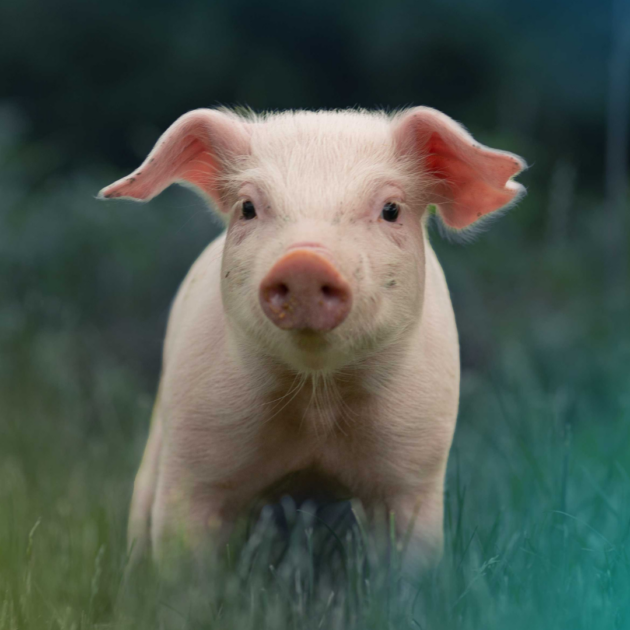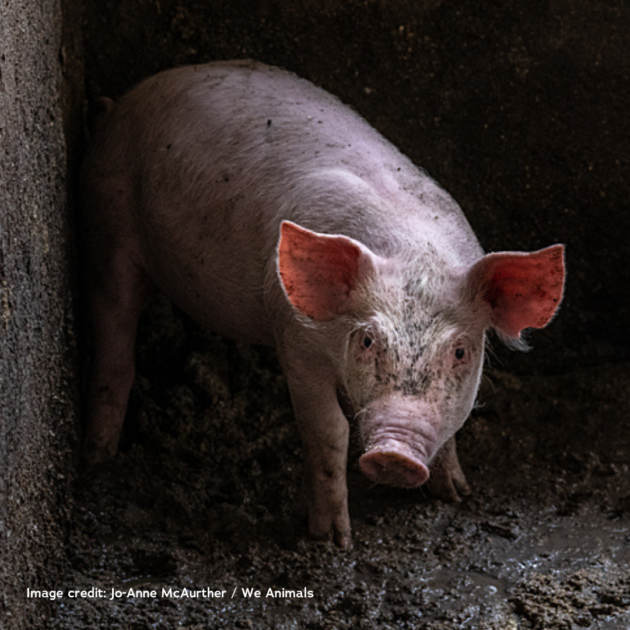Reaching a New Audience: Insights From a Market Research Survey

At Animal Charity Evaluators (ACE), we’re always looking for ways to increase our impact in fulfilling our goal of helping more people help animals. One of the ways we’re doing this is by expanding our reach to new audiences. We launched a two-month marketing campaign aimed at engaging an audience we call “New Animal Protectors.” This audience consists of people who have compassion for animals and already donate to animal protection efforts, but only support animal causes they feel close to (e.g., shelters and sanctuaries). This doesn’t mean they don’t care about farmed animals, but they are yet to feel connected to and inspired to support them.
Our aim with this audience is to raise more funds for exceptionally successful efforts to reduce the amount and severity of neglected animals’ suffering. To significantly increase support for this work, we need to appeal to people outside of the animal advocacy movement who might not be ready to change their purchasing and eating behaviors but are willing to financially support better welfare standards and the fight against animal cruelty.
For this campaign, we decided to initially focus on farmed animals to avoid overwhelming this new audience with the sheer scale of both farmed and wild animal suffering. Before launching, we ran a market research survey to better understand how New Animal Protectors view farmed animals and determined the best ways to connect with them. In this post, we will share some key insights from the survey, how we used the results to shape our campaign, and insights we’ve had along the way.
Methods
We designed a comprehensive survey using Qualtrics and distributed it via Prolific. The survey comprised 38 questions, structured into distinct sections to explore key aspects of participant demographics, engagement with animal charities, and the effectiveness of various communication strategies. A total of 82 respondents completed the survey.
Audience
The demographics of the target audience were as follows:
- Gender: Inclusive of all genders
- Age: Primarily between 45 and 65+
- Location: Based in the U.K., U.S., and Western Europe
- Education: Open to individuals of all educational backgrounds
- Household Income: No restrictions on income level, allowing for a broad range of financial perspectives.
- Giving Behavior: All participants had donated to an animal charity within the past year (to ensure they were interested in supporting animal welfare).
Survey Structure
The survey was divided into the following sections:
- Section A: Demographics – Collected basic participant information, including age, location, education, and household income.
- Section B: Farmed Animal Charity – Assessed participants’ awareness, attitudes, and support for farmed animal charities.
- Section C: Communication Channels – Identified preferred platforms and methods for receiving information about causes they care about.
- Section D: Incentives – Examined what types of incentives influence engagement with causes they care about.
- Section E: Social Media Ads (Text) – Evaluated responses to different messages in social media advertisements.
- Section F: Social Media Ads (Images) – Measured reactions to visual content used in farmed animal charity advertisements.
- Section G: Farmed Animal Charity (Follow-up) – Gathered further insights on participants’ perceptions and potential behavioral changes after exposure to the survey content.
Key Barriers for New Animal Protectors
Through qualitative analysis, we identified several barriers that may be preventing New Animal Protectors from supporting charities that work to protect farmed animals. These are as follows:
- Concerns about how donations are spent: Many respondents wanted to ensure that their donations are used as intended, that is, going directly to support animals rather than operational expenses.
- Trust and reputation: A significant number of respondents expressed wariness of charities they don’t know well.
- Impact on animals: Respondents were eager to understand exactly how their support will help animals. They want to see tangible evidence of the difference they’re making.
- Perception of responsibility: Some respondents believe that the responsibility for protecting farmed animals lies with farmers or the government, not them.
- Concerns about vegan activism: Some respondents voiced discomfort with being associated with vegan activism or being told not to eat meat and dairy.
Where to Reach New Animal Protectors
What we found
Our quantitative analysis shed light on where New Animal Protectors spend their time online and how best to reach them. Charities’ websites (42.78%) are the top sources of information, followed by social media (31.85%), and newsletters (10.19%). The most commonly used social media platform for this audience is Facebook (37.23%), followed by YouTube (19.71%), Instagram (16.79%), X (10.95%), Reddit (9.49%), TikTok (3.65%), and Threads (2.19%).
What we did
Based on this information, our campaign focused heavily on digital platforms, strongly emphasizing social media advertising with images. In the future, we want to focus a campaign on video outreach through digital channels, something we didn’t do this time as it is time and resource-intensive. We had initially planned to target New Animal Protectors through podcasts. Still, podcasts ranked lower than expected as a source of information, so we shifted our focus away from that platform for this audience.
Lead Magnet
What we found
To explore how to best offer value in return for asking people to sign up to our email list, we asked participants to imagine seeing an ad from an animal charity and to rate how likely they would be to sign up for our email list based on different incentive offers. The options were:
- A free guide with information about farmed animals and practical tips on how they can help them.
- A free quiz to test their knowledge and learn about farmed animals and have the answers sent to their email address.
- A free guide on how farmed animals are like our companion animals (e.g., similarities between pigs and dogs).
The guide with information about farmed animals received the highest interest, followed by the guide connecting farmed animals to our companion animals, while the quiz received the lowest interest.
What we did
Based on these insights, we prioritized focusing the guide with information about farmed animals. However, recognizing the appeal of the similarities between farmed animals and companion animals, we also incorporated a dedicated section in the guide to draw these parallels, with the aim of educating people about how similar farmed animals are to companion animals.
Messaging That Resonates
What we found
The survey helped us identify the types of messages that resonate most with New Animal Protectors. Respondents stated that the “inspiration/motivational” language would most likely inspire them to find out more information because the message was perceived as uplifting and offering a positive vision for the future. Some also stated that the positive language gave them a sense of hope and purpose. On the other hand, the “emotional” language was rated the lowest, with some participants saying they felt it was emotionally manipulative.
Below are examples of the messages that we asked participants to evaluate.
Inspirational/Motivational:
“Imagine a world where billions of farmed animals no longer suffer. Your support has the power to make that vision a reality and give so many animals the life they deserve. Get your free guide on how to help them!”
Emotional:
“Our hearts are with the billions of farmed animals who suffer every day. If you too feel outraged and deeply saddened by the treatment these animals endure, sign up to learn how you can help them.”
What we did
Therefore, the “inspirational/motivational” copy played a central role in our campaign. We wanted to ensure that our messaging remained hopeful, empowering, and focused on the positive difference that New Animal Protectors can make.
Sad vs. Neutral Images
What we found
Most survey respondents self-reported that they would be more likely to sign up for our free guide on helping farmed animals when they were exposed to sad images of farmed animals rather than neutral ones. They noted that the images were realistic but evoked sadness as well. This emotional resonance seemed to encourage people to take action. This is quite speculative, but it could be due to a stronger sense of empathy and urgency conveyed through the imagery. See the images we showed participants below.
What we did
Following this insight, we incorporated these findings into our first preliminary paid ad with more detailed targeting, using both sad and neutral images of a pig. We ran the ads for 10 days with a budget of $1000 USD and the ads were optimized for email sign-ups. The results aligned closely with our survey: Ads featuring the sad pig had a lower cost per click (CPC) of $0.99, vs $1.27 for the neutral pig image. The sad image also had a low cost per acquisition (CPA), which was $2.39 per email sign-up, compared to $3.79 for the neutral pig image. Through further tests, we managed to lower the CPA for the sad pig image to $1.61 and we will be aiming to lower this further as we continue to learn about this new audience. This valuable information shaped our ongoing efforts to reach and inspire New Animal Protectors.


Donating to a Charity That Works to Protect Farmed Animals
There was an increase in survey respondents’ self-reported likelihood to support our cause after engaging with our campaign materials, with a 28.6% increase for “very likely” and a 3% increase for “somewhat likely.” However, many respondents mentioned that they need more information before deciding to take action. That’s why, as part of our campaign, we developed a dedicated landing page and free guide with detailed information about how New Animal Protectors can help farmed animals, and why their support is crucial to help reduce animal suffering.
Next Steps: Building Relationships with New Animal Protectors
We’re excited to continue refining our approach based on this research and to build meaningful relationships with this new audience. By increasing their awareness, addressing their concerns, and tailoring our messaging, we hope to inspire New Animal Protectors to donate to effective animal advocacy organizations.
We sincerely appreciate everyone who took part in our survey. Your valuable insights are helping us shape a more hospitable world for all animals.
Stay Tuned! If you’re interested in learning more about our campaign or how you can help animals, be sure to sign up for our mailing list and follow us on social media for updates. We will also be sharing more insights from further testing we’ve completed since doing this survey. Finally, if you are a marketing expert and have insights that could increase our efficacy, I’d love to hear from you!
This blog post provides a dive into our market research findings and outlines how we’re using these insights to guide our strategy moving forward. We look forward to sharing more updates as our campaign progresses.
Support our work to influence more people to give effectively to help animals. Donate today.
About Holly Baines
Holly joined ACE in September 2021. She holds a bachelor’s degree in psychology—focused on human food choices—as well as a master’s degree in wild animal biology. Before joining ACE, she spent four years working in wildlife conservation. Holly is passionate about using communications to promote ACE’s mission and help as many animals as possible.
ACE is dedicated to creating a world where all animals can thrive, regardless of their species. We take the guesswork out of supporting animal advocacy by directing funds toward the most impactful charities and programs, based on evidence and research.
Join our newsletter
Table of Contents




